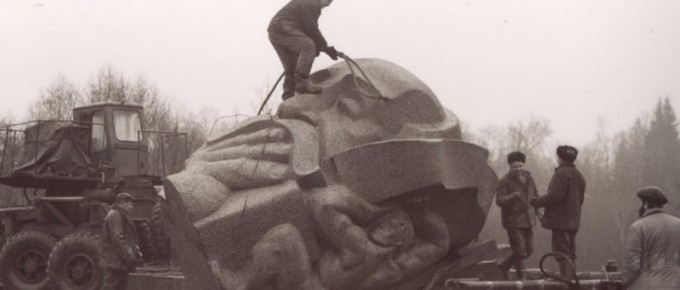Establishment of Folk Song Hill and Folk Song Garden The establishment of Folk Song Hill andFolkSongGardenwas a project which was exciting and full of enthusiasm, love and worries. The project was organised by the sculptor Indulis Ranka. The author of the idea and the head of the working group was Anna Jurkāne, and she was assisted by the architects Jānis Rozentāls and Ilgvars Batrags, the landscape designers Aivars Irbe and Ruta Brice, as well as hundreds of people from all overLatvia. Folk Song Hill was not commissioned by the Soviet Latvian government. The idea was enshrined in a “special agreement” which was signed on October 21, 1980, and was based on correspondence between Ranka and Jurkāne, who was the director of theSiguldaRegionalResearchMuseum.
Countless hours were spent in thinking about and working on the establishment of Folk Song Hill andFolkSongGarden. It was decided to install sculptures and to create a lovely landscape and garden at the site. Folk Song Hill was established with deep piety toward the surrounding environment. The ensemble of sculptures was intuitive, making sure that the sculptures were in full harmony with the living environment in which they are found.
Turaida is full of sings about work, nature and the fatherland, and it has gradually become a special place at which folk songs can be used to express yearnings for freedom. As the Third Latvian Renaissance approached in the mid-1980s, Folk Song Hill was the place where the Latvian Singing Revolution emerged and continued until the restoration of Latvia’s independence in 1991. Today Folk Song Hill is a symbol for the Singing Revolution, sending an eternal message about the strength of song and the self-respect of the Latvian people.
The opening of Folk Song Hill Folk Song Hill was opened to the public on July 7, 1985, in honour of the 150th anniversary of the birth of folklorist Krišjānis Barons and with a performance of one of the folk songs that he collected – “I Stood and Sang Atop a High Hill.” Initially, the park had 15 sculptures by Indulis Ranka. People remember the date as a grand day for folk songs on Folk Song Hill. Poet Jānis Peters told the gathering that “the Latvian folk song has never resounded on such a high hill. It is a hill which testifies to the satisfaction of our people.”
The first international folklore festival “Baltica” was held inLatviain 1988, and the red-white-red Latvian flag was proudly raised on Folk Song Hill alongside the sculpture “Father of Song.” Folk Song Hill increasingly brought together larger and ever larger numbers of folklore and ethnographic ensembles. They presented countless concerts in Turaida to sing about the people’s unity, consolidation and independence. Folk Song Hill became a site at which people could try out their skill at singing, performing music and dancing, and it helped to strengthen the people’s identity. Today Folk Song Hill is a symbol for Singing Revolution, sending an eternal message about the strength of song and the self-respect of the Latvian people.
Art historian Ruta Čaupova: “From the very beginning, this has been a place which the Latvian people nurture. Folk Song Hill has been and continues to be an indicator of the culture of the age of the Renaissance. I would say that it is a joint symbol for the culture of the nation, and it is based on culture, as well.”
The opening of Folk Song Garden During the aforementioned “Baltica” folklore festival in 1988, it was clear that there was a need for a larger area at which people could come together and celebrate the nation’s folk songs. A great deal of work was done in the orchard and the clay-based valley of the Turaida Estate – a valley that is full of streams – to create an outdoor amphitheatre. It can host a great many singers, dancers and audience members in the open air. FolkSongGardenopened the path for the further implementation of the idea of sculptures, the idea being that stone breathes and has ideas which become part of the surrounding environment. The curvy paths which linkFolkSongGardenand Folk Song Hill established a unified ensemble – Folk Song Park.
In 1996, inWashington, Folk Song Hill was registered on a global list of sculptural gardens and parks.

